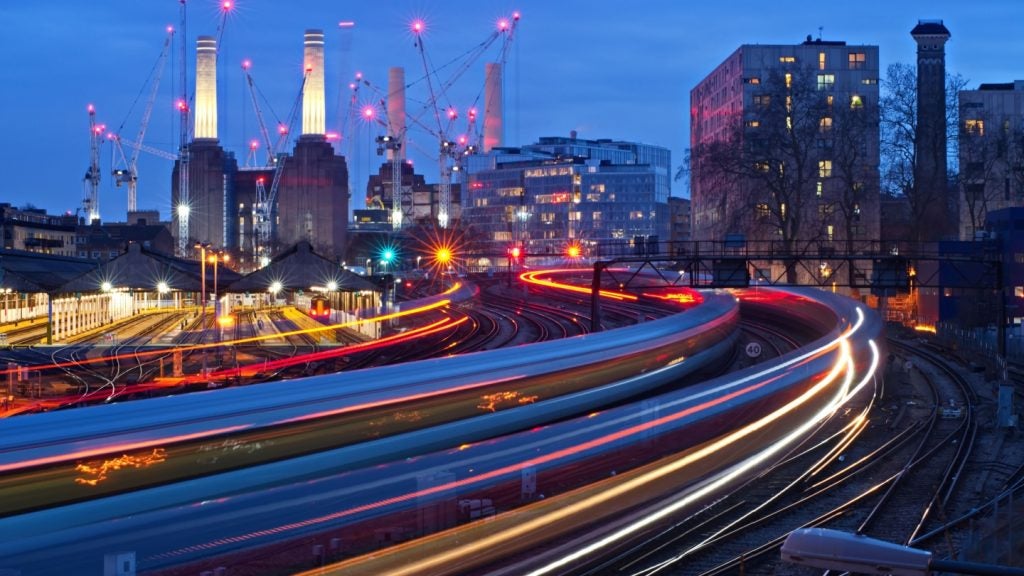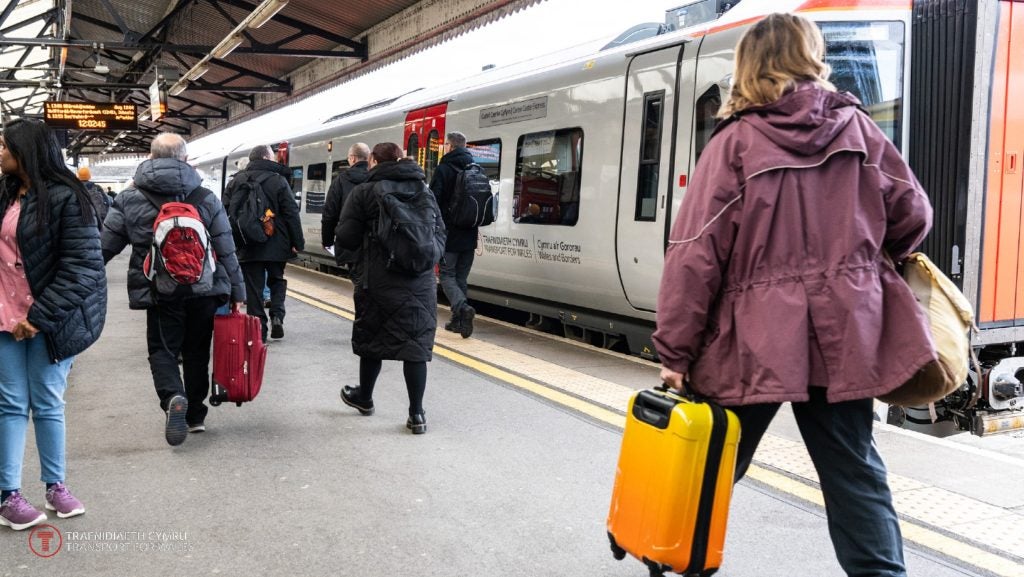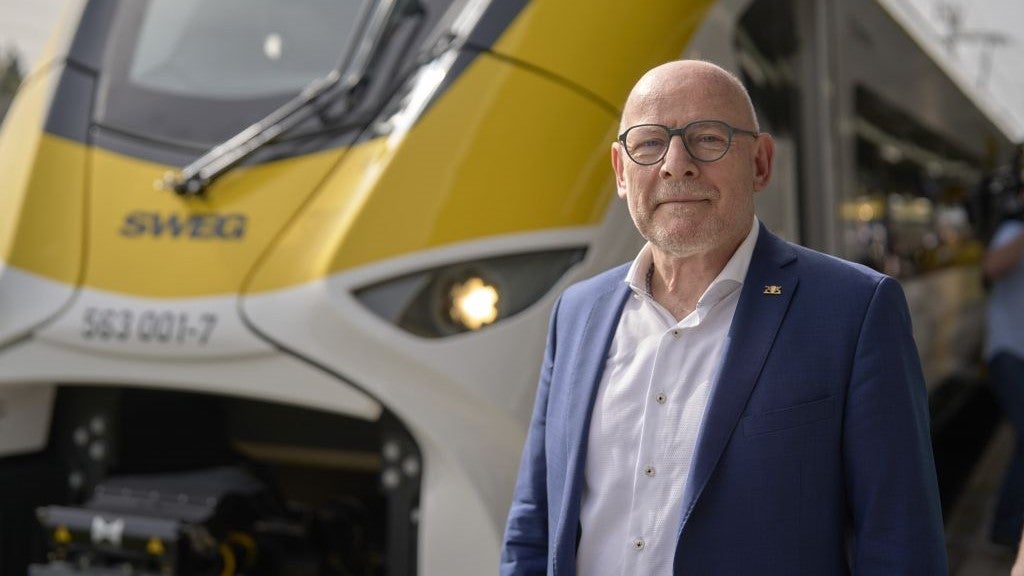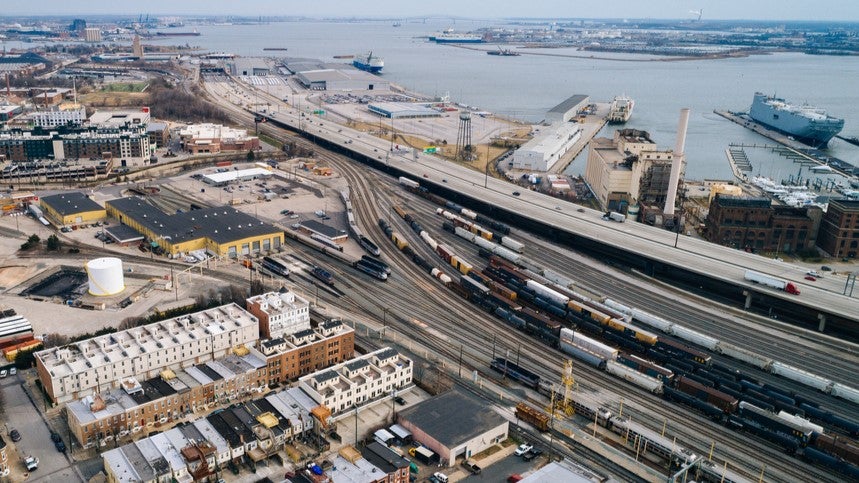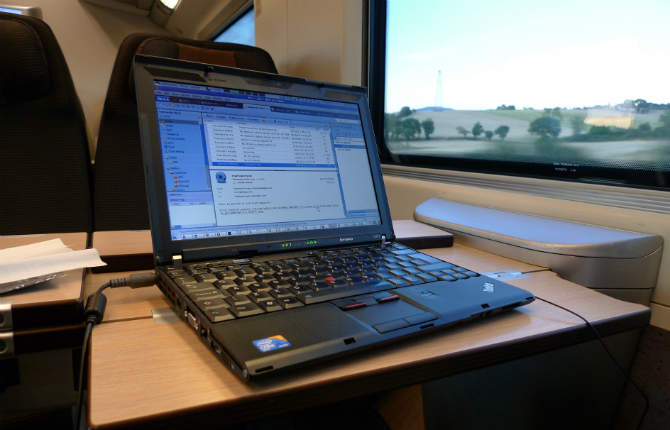
In today’s hyper-digital era, onboard WiFi has become less of a handy convenience and more of a necessity for rail passengers.
Books and broadsheets are now a rare sight on trains amongst the swathes of laptop, tablet and smartphone users, most of whom want to stay online while they work, chat or stream.
However, increasing demand has meant that many rail operators struggle to meet customer expectations of train WiFi. In this year’s otherwise promising National Rail Passenger satisfaction survey, only 30% of UK passengers were satisfied with onboard WiFi, a rating so low that even train toilet facilities ranked as a more successful category.
Train operators are looking to improve the reliability and availability of onboard WiFi, with Virgin Trains being one example. “On the west coast route, our franchise contract with the Department for Transport in 2014 included provision to upgrade onboard WiFi servers to ensure they are future-proof,” says a Virgin spokesperson.
Nevertheless, when it comes to bringing onboard WiFi up to the same level passengers expect at home, commercial issues and the difficulties of large-scale infrastructure upgrades make this much harder to achieve.
Dedicated to connectivity
Trains with WiFi are usually fitted with wireless access points to provide coverage across passenger carriages. However, these rely on existing mobile networks, which are more readily available in some areas than others.
How well do you really know your competitors?
Access the most comprehensive Company Profiles on the market, powered by GlobalData. Save hours of research. Gain competitive edge.

Thank you!
Your download email will arrive shortly
Not ready to buy yet? Download a free sample
We are confident about the unique quality of our Company Profiles. However, we want you to make the most beneficial decision for your business, so we offer a free sample that you can download by submitting the below form
By GlobalDataMobile network operators build infrastructure to enhance connectivity where their own demand is strongest, such as in busy cities or residential locations. But this means that trains chugging along rural routes don’t receive the same reliable or fast services, and can experience so-called ‘not-spots’ where connectivity is non-existent.
The answer could be to create more bespoke, dedicated WiFi networks, with purpose-built stations to fill the gaps in coverage along tracks. Last year, US railroad service provider Amtrak commenced its plan to provide a dedicated wireless network from Washington DC to Boston, a project that will allow it to bypass commercial mobile networks completely.
Such a scenario being introduced more could have beneficial results according to Thomas Roberts, senior vice-president of EMEA product and marketing for onboard WiFi supplier Icomera. “The biggest advantage of a dedicated trackside network, apart from an overall increase in capacity, would be also to have a provider who may be able to explore different business models, opening up much more bandwidth for the passengers,” he says.
Yet, the problem is that the large-scale projects needed to implement trackside technology are often scuppered by a range of issues, from planning consent woes to full-blown nimbyism. Recently, the Massachusetts Bay Transportation Authority was forced to halt the installation of more than 300 75ft WiFi connectivity towers along rail lines in Greater Boston, after local residents and municipal leaders feared they would be too tall and so affect property values.
Funding is also required for projects that improve WiFi services for passengers, and the question then is how network providers and train operators will organise who pays for what. The crux is, which of these parties believe that it’s worth stumping up the cash to provide vital technology, such as connectivity towers, or leaky feeder systems to enhance connectivity in tunnels.
Speaking from the WiFi supplier angle, Roberts believes that mobile network operators have more than enough reason to invest in dedicated networks, as this could lead to attractive deals with transport operators. “We believe that there is absolutely a business case for a dedicated trackside network in the UK,” he says. “The business case is based around the fact that the mobile network operators can hold transport operating companies to ransom because they’re the only providers.
“Clearly there’s the underlying engineering project that could be large-scale. It involves quite a few different parties, but I think the more complex thing is working out the business model.”
Railway data demands
The majority of WiFi issues are wrapped up in the sheer number of passengers wanting to get online today. The systems work, but as more users attempt to latch on to trains’ connection points, more data needs to be transmitted, which results in increased costs for the rail operators paying for the service.
“If you look at the solution we install in 2017, there’s absolutely no technical reason why we can’t deliver WiFi that meets and even exceeds passenger expectations,” says Roberts.
“There are commercial reasons why it is difficult in terms of the cost of data for the transport operating companies, and the limitations that places on the level of service that can be delivered to the passengers.”
In 2015, the UK Government pledged to provide rail operators with £50m in funding to ensure free WiFi on trains by 2017, only to reveal that the conditional speeds they needed to provide at the start was only 1 megabit per second.
For passengers wanting to download email attachments or browse Netflix, this sort of speed is not up to snuff. But on the other hand, rail operators don’t want to fork out for the sort of bandwidth that customers tend to enjoy at home, leaving them with two options: provide a free service that doesn’t reach these lofty standards, or lock WiFi behind a paywall so fewer passengers can use it.
“The biggest issue if we look at Icomera fleets, where we do have a very high level of up time and connectivity, is simply a deliberate decision to throttle the bandwidth in order to control data costs,” says Roberts.
Last year, Icomera worked with Swedish Rail (SJ) to improve WiFi connectivity speeds. The comparison Roberts makes with trains in the UK highlights the crucial difference that data costs can make.
“The technology is the same, but the difference is the mobile network operators make large quantities of data [available] at a price the business model supports, so there is a business case for SJ to deliver large quantities of data to each passenger,” he says. “Because of the cost of data in the UK, the same thing can’t be said.”
From this perspective, it seems that improving onboard WiFi will require increased collaboration between rail operators and mobile network providers to iron out commercial issues, rather than just technical ones.
In the meantime, Virgin has made steps to allow consumers to access onboard entertainment without relying on mobile networks. Installed on trains last year, the company’s BEAM service enables customers to watch films and TV shows via an onboard server.
“This service doesn’t use the WiFi as we have created a network on our trains which beams direct to your personal device,” the Virgin Trains spokesperson says.
Retrofit for the future
One of the factors that has slowed progress towards enhanced WiFi has been the complexity of retrofitting existing trains with modern systems. Roberts explains the difficulty with reference to Icomera’s ongoing project with transport operator Govia, which operates three rail franchises in the UK.
“It’s definitely a complex process, particularly because there are so many different types of train involved,” he says. “In just one project we have 36 different train types that we have to be able to deliver solutions to, so it’s definitely not as optimal as being able to work early on in a train design before it’s built.”
However, Roberts is optimistic that with WiFi now a staple on many trains, the problems of retrofitting will become less and less relevant. New trains will be built with WiFi in mind, which could help rail operators to maximise the potential of onboard services.
“More and more we’re focusing on newbuilds, and with a newbuild train there are some fantastic opportunities to work with the train manufacturers early on in the design process to optimise the solution and see it as a fundamental component as a new train, rather than something that you bolt on afterwards.”
WiFi’s decidedly mixed trial period on existing trains has not gone unchecked by the UK Government, with numerous promises being made for the future. Rail franchises under the Department of Transport are expected to provide WiFi on 90% of passenger journeys by 2018, while newer franchises will be required to get rid of ‘not-spots’ situated on their lines.
Nevertheless, as Roberts says, it’s unlikely that the blisteringly fast speeds rail passengers take for granted at home or in the office will not be seen on trains anytime soon.
“Some passengers have an expectation that as at home, where on average most people are used to being fairly unlimited, that it should be the same thing on a train and at the moment that just isn’t how the business case stacks up.”



